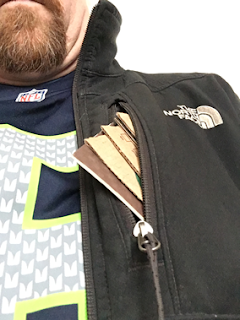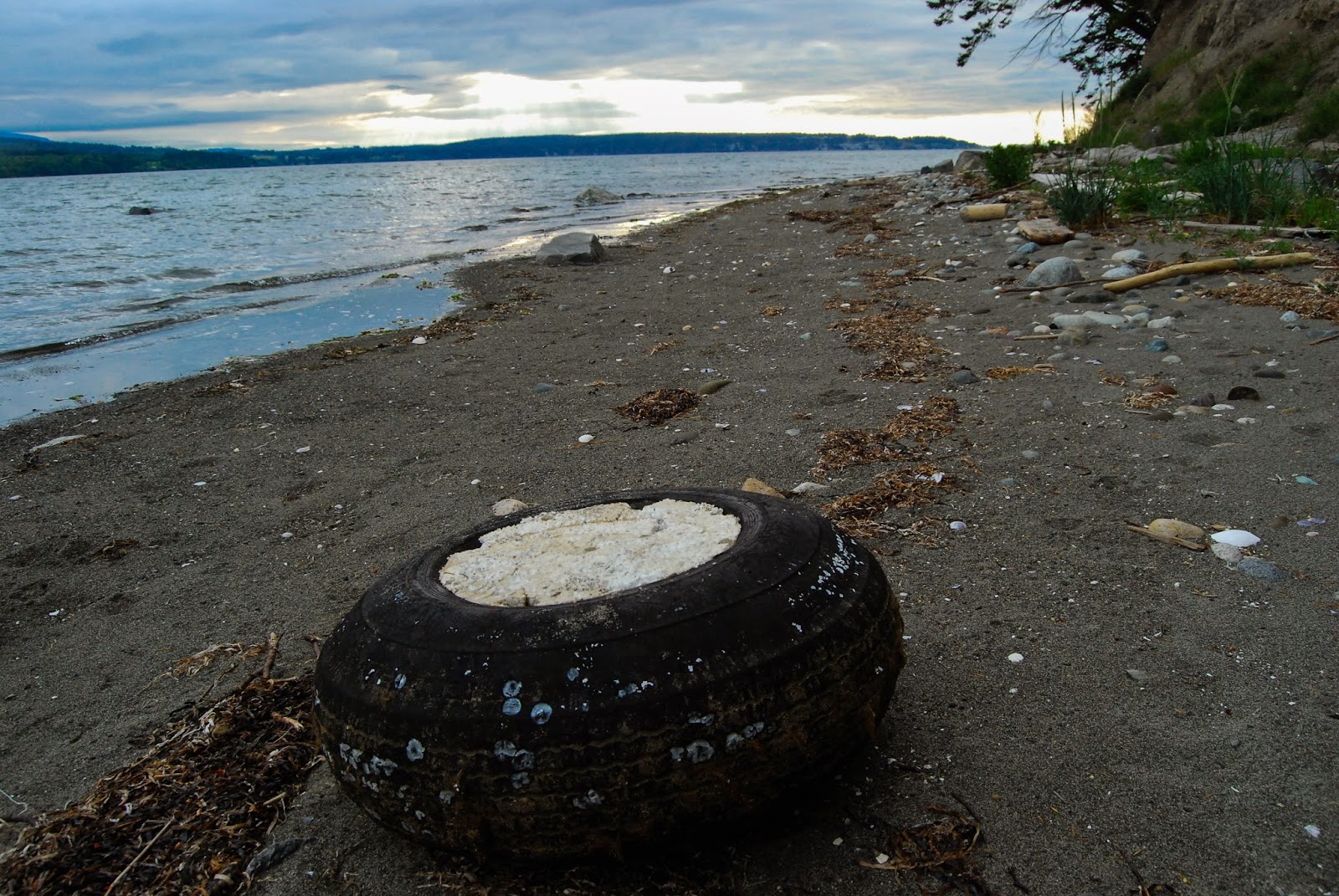I am appalled on a regular basis about the sheer volume of garbage that my household generates. One question I frequently ask is: how can I get more use out of the things I normally throw away, in such a way that I avoid buying new stuff, and delay putting things into the wastestream? Recycling is great, but re-use is better (not buying it in the first place is, naturally, the best of all, but that is an exercise I leave to the reader) . For example, plastic bags from the grocery store, or which encase our newspaper delivery, become poop bags when we walk the dog, or line our household wastebaskets. In keeping with the “one piece a day” ethos, I consider it a win every time I can get one extra use out of something. If that plastic bag lives another day as a receptacle for my dog’s detritus, it’s one more day out of the landfill, and one less manufactured poop bag I need to buy. I wash and re-use Ziploc bags, store or ship things in Amazon.com boxes… you get the picture.
The best wastestream reduction I came up with involved our pet rabbit and the overabundance of junk mail that comes to our mailbox. The non-plasticized portion of our junk mail went into our shredder, and I then used it as fill for the 3-story rabbit hutch on our deck that I built out of salvaged materials. Each week, as I cleaned out the old fill (now soaked with nitrogen-rich rabbit urine and feces), I would dump it into our compost bin to convert it to soil for the garden. In one fell swoop, I found a positive use for junk mail, eliminated the need to buy rabbit litter, increased our compost production, and protected my family from identity theft. Alas, “T-bunny” passed away, and so did this marvelous lifehack.
A more reliable way to practice re-use, and one that does not depend on the lifecycle of a pet lagomorph, has to do with that little cardboard sleeve that comes on your disposable coffee cup – the Java Jacket.
If you drank hot beverages in disposable cups prior to 1991, you had a choice – use a Styrofoam cup, or burn your fingers. The impact of Styrofoam on the environment was already well-known, and as early as 1987, municipal governments were banning Styrofoam and polystyrene from use in food containers. In 1991, Jay Sorenson invented what is now commonplace – the embossed or corrugated cardboard sleeve that comes on most disposable coffee cups.
Today, Java Jackets are ubiquitous. While some are generic, most coffee shops these days have sleeves with their own branding, accomplishing the dual goals of advertising and comfort. How many of these are used annually? Well, Starbucks alone claims on the order of 4 billion drink sales annually, and while many of these drinks come without an insulating sleeve (you don’t need one on your Pumpkin Spice Latte or your Very Berry Refresher), a good percentage of them do. If you take a conservative estimate of 10% hot drinks with sleeves, that’s 400 million sleeves annually from Starbucks alone. At about 12 square inches apiece, that’s about 34 million square feet of cardboard – enough to cover a little less than 600 football fields. While that is small potatoes relative to the volume of the American wastestream, it’s large enough to consider making some small changes to reduce that impact.
The best start is to ensure that your cardboard sleeve winds up in the recycle bin rather than the garbage can, but you can do even better by re-using your sleeve multiple times. It’s simple to slide the sleeve off when disposing of your cup, and to slip it into your glove box, jacket pocket, backpack, purse, or multifunctional camo man bag.
  |
When ordering your grande americano, let them know that you brought your own sleeve, or simply slide the sleeve they give you off of the cup and return it to them with a smile while sliding on your own. I was pleased recently when the barista at Urban Coffee Lounge smiled back and said “I see more and more customers doing that.”
You can do even better by buying your own re-usable fabric sleeve (you’ll likely find a few at your local craft fair), or by always bringing your own mug (eliminating the disposable cup entirely), but for sheer convenience, re-using the disposable sleeve is the simplest way to ensure that you cut your sleeve usage in half. Using the one-piece mindset, think in terms of making sure you use every sleeve twice. Every additional use makes the world a little better.
Additional References:








